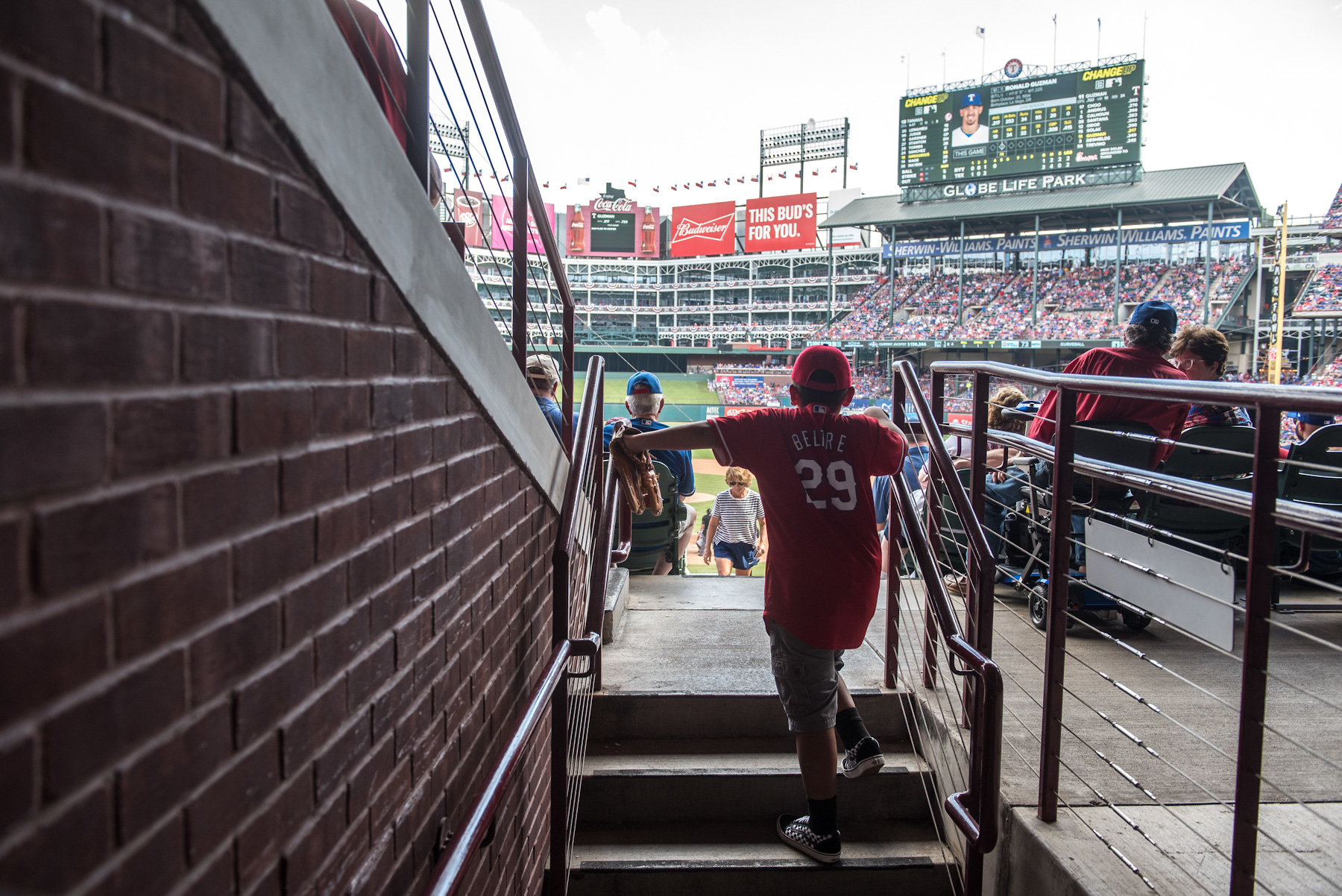Due to the coronavirus pandemic, the professional sports world has been at a standstill since March.
As many have begun making decisions on how and when to return to play, Gensler, an architecture and design firm that’s worked on facilities such as The Star in Frisco, Moody Center at UT-Austin, and Dodgers Stadium in Los Angeles, asked its global sports leaders to share insights about the challenges, questions, and strategies when it comes to getting fans back into the stands.
The firm recently hosted a webinar where Ray Shick, co-regional managing principal for Gensler Asia Pacific, discussed such strategies with Ryan Sickman, principal and sports and convention centers leader in the Washington D.C. office; Jonathan Emmett, principal and design director of sports practice in the Austin office, and Ron Turner principal and sports and convention centers leader in the Los Angeles office.
The industry leaders dove deep into recommended steps, beginning with an emphasis on safety, transitioning to temporary precautionary measures, and then leading to the futuristic venue experience.
Simply put, venue owners will want fans to feel safe when they come back; that means following CDC guidelines on social distancing, physical spacing, and deep cleaning. “They need to see the hand sanitizer stations,” Sickman said. “They need to see the presence of your cleaning staff, even during games. That’s something that, historically, we have hidden in the operational protocols for our venues.”
In Gensler’s Back to Sports Guidebook, the firm gives recommendations for putting health screening protocols in place, adhering to the space standards and distancing guidelines, improving sanitization procedures, increasing hygiene practices, and transitioning to mobile ticketing.
Sickman expanded upon the idea of perception: If people see venues identifying and resolving issues, such as a need for improved health protocols, cleaning measures, and sanitization procedures, they will have a better sense of security when entering.
“We certainly are going to have a lot of elements of the cleanliness that people need to see,” he added. “They need to see that you’re taking these actions in the venues, so we’ve seen a lot of protocols be put in place with respect to the sanitation and the cleanliness of our facilities. That’s something that needs to be forefront.”
Although the experts from Gensler believes some of the precautionary measures will most likely be short-term, others are more long-term, including enhanced fan experience, prioritization of health and wellness, mobile ordering, and smart building applications.
“If you start to think about a pre-order menu or menu ordering from your seat, is that something that people buy into and want to use long-term, or do they start to think about, ‘I miss going to the concession stand and waiting in line,'” Sickman says. “I don’t think people are going to miss waiting in line, but the reality is that you’re going to adopt some technologies, other probably not as much.”
The firm leaders say they will continue to adapt as the first couple of venues reopen, looking at how to transition into a better overall experience and a more permanent, reimagined future?
“With every one of these areas, we are thinking about how those adapt as more fans are brought back into these buildings,” Emmett said. “One of the real benefits to only having maybe 25 percent or 50 percent of the fans in the buildings is not only from the health and safety perspective, but it’s going to allow your staff, your operational staff, your teams, your design teams to adapt along the way. As well, learn best practices and be able to implement those over [a period of] time in a fashion that we can learn and adjust as need be. We’re looking at every aspect of the fan experience but also looking at the staff experience, the player, and back of house experiences, too.”
Other suggestions from Gensler range from parking and tailgating to seating, signage, and way-finding.
Gensler’s recommended parking and tailgating guidelines, which include blocking off every other parking space, limiting entry points to and from the sporting venue and tailgating areas, reducing group numbers, physically distancing groups, and mandating one-way walkways. Physical distance guidelines include spacing out sections based on venues’ ticketing policies, mandating one aisle per section to limit up and down traffic, and timing entries by section.
Gensler’s most crucial touchpoint is signage. The firm recommended way-finding guidelines include placing floor decals to adhere to physical distancing guidelines, converting to all digital signage capable of real-time update and mobile application integration, updating entrance signage to follow the Centers for Disease Control guidelines for people socially distance and wear masks, and enabling voice-activated or gesture-based interactive screens.
“So, charting that path forward, I think it’s been interesting thinking about what the temporary and then permanent types of things that will happen in our buildings, but we’re still in this learning mode,” said Turner. “We need to create a good foundation here. This is the place where we create a foundation that allows us to move forward and, as we move forward, making sure that we add to that foundation so that we’re not going back.”




